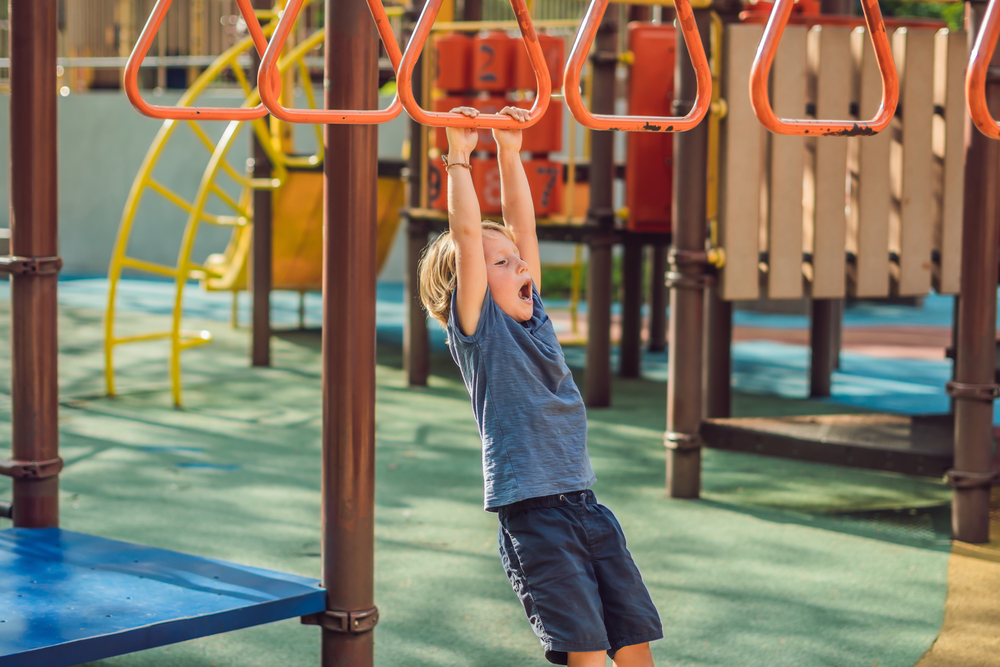
“Be careful!”
“Not so high!”
“Slow down!”
“That’s too dangerous!”
These are often words of caution you hear from parents who are concerned about their children’s safety at playgrounds.
Their warnings often stop their children from engaging in risky play for fear of injuries. But research has shown that risky play for children is recommended because it helps them develop their capabilities and self-confidence, and create mentally healthier kids.
Through risky play, kids learn where their limitations are, what is safe to attempt and what is not, as well as how to make the right choices for themselves.
In addition, engaging in different types of risky play will help your child to learn important life-skills such as building resilience and persistence, cultivating curiosity and problem-solving skills, and understanding the consequences of an action.
Types of Risky Play for Children
Risky play for children provides opportunities that allow children to explore their boundaries and test their limits. Typically, they engage in activities that are thrilling and exciting that involves a risk of physical injury.
Here are the different types of risky play your child can engage in:
- Play with Speed such as bicycling at high speeds, sliding, or running uncontrollably.
- Play with great heights such as climbing trees or ropes, jumping, hanging/dangling or balancing on planks.
- Play with dangerous tools such as building a fort, playing with fire (such as sparklers), in water or using sharp objects like scissors.
- Rough-and-tumble play such as wrestling, fighting or fencing with sticks.
- Exploratory play such as allowing children to explore their neighbourhood without supervision, with a chance of getting lost. For example, hiding in bushes or going to the playground unsupervised.
- Play with impact where children crash into something repeatedly just for fun.
Read also: Why Kids Ask ‘Why’ – and How to Handle Their Questions
How Can Parents Encourage Risky Play?
If you are still nervous about risky play for your child, we show you how you can engineer it so that your child can engage in different types of risky play safely.
1. Trust your child
Even though they are young, children intuitively know what they are ready for and what their capacities are. As parents, we can follow their lead and ensure they have an environment to explore on their own. Take care not to push your child too far as it may traumatise them and turn them away from fun adventures in the future.
2. Assess the risk and provide guidance
As parents, we want to protect our children from danger or incurring serious risk. Hence, it is prudent to survey the play environment for any potential danger or folly to your child.
For example, if there are needles or broken glass on the ground, or sharp objects that could pose as a danger to your toddler, you might want to intervene and discuss with your child the risk factors and alternate ways to stay safe.
Ask the right questions like the following that encourages young children to more carefully consider what they’re doing.
- Where should your foot go next?
- Do you feel safe?
- Does that feel wobbly?
- Show me how you can be careful!
3. Don’t always help
It is difficult for any parent to watch their child fall or fail. Our natural instinct is to jump in to help. However, that will prevent your child from learning a powerful lesson of managing his body and understanding risk assessment and consequences.
Time your intervention right to allow your child this valuable learning experience. You might even be pleasantly surprised by how tenacious and resilient your child is.
4. Provide time, freedom and space for good play
Problems arise when risky play is rushed. Allow sufficient playtime for your child to have the time, freedom and space to play confidently and practice their risk-assessment skills.
5. Don’t let your own fears get in the way
Get out of your child’s way to learn by facilitating and supporting their preference for risky play. If your heart is still in your throat when watching your child practice his risky play, you should practice the 17-second rule.
Mariana Brussoni, a professor at the University of British Columbia and BC Children’s Hospital advises parents to step back and “see how your child is reacting to the situation so that you can actually get a better sense of what they’re capable of when you’re not getting in the way.”
Read also: 4 Sensory Play Activities for Toddlers and Preschoolers
Now that you have a better understanding of risky play for children, do you have any suggestions for other parents who wish to encourage their children to engage in risky play?























